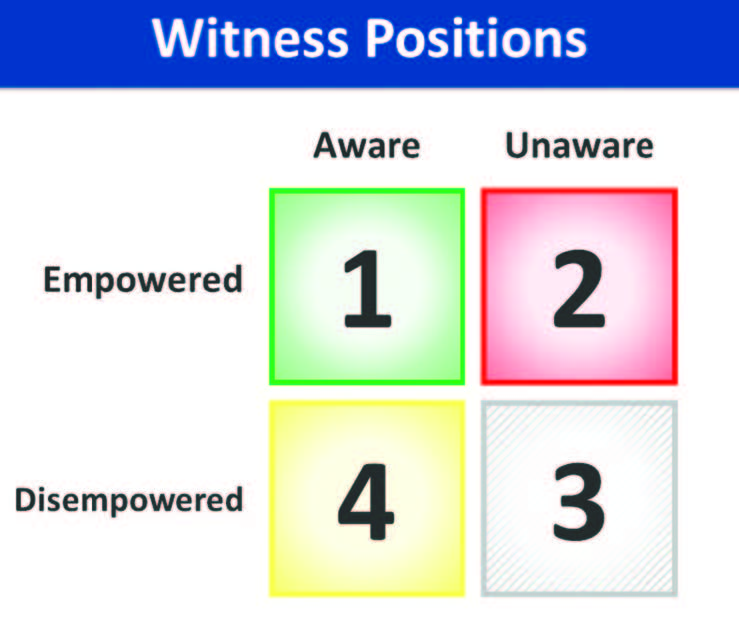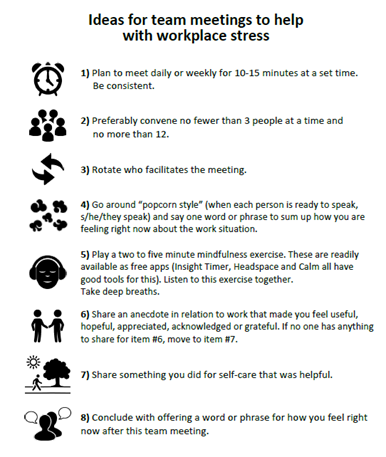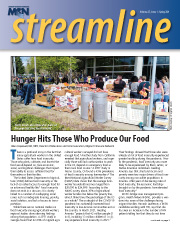
The Witness to Witness Program (W2W) celebrated its one year anniversary of working with Migrant Clinicians Network on February 6, 2021, and what a year it has been. However, the relationship goes back longer and it is central to the origin story of W2W. In June, 2018, I heard Deliana Garcia, MCN’s Director of International Projects and Emerging Issues, on a panel presentation about work with people at various stages of the detention process and realized that there was a gap in support for the helpers. With Garcia and colleagues from the American Family Therapy Academy we created the early phase of W2W, which was designed to offer one-to-one support for helpers who were themselves stressed by witnessing and assisting those in perilous situations. W2W was based on a model of witnessing, and derived from other programs of support, that I had developed over a period of 25 years.
During the first year of W2W, many of the helpers’ needs became abundantly clear. W2W expanded its volunteer cadre to 38 volunteers, six of whom were bilingual, and we added three additional program components: online seminars, peer support groups, and organizational consultation. With the help of MCN, even prior to the affiliation, W2W conducted a few surveys with the hundreds of health care workers who registered for MCN/W2W webinars. The survey data demonstrated that although there were stressors for health care workers at every level within the health care system, supervisors and managers were under particular stress, sandwiched between accountability to those above in the institutional hierarchy at the same time as they were managing staff. These staff members sometimes thought the policies and practices they had to implement were out of touch with conditions on the ground. Once the disasters of the COVID-19 pandemic hit, these stressors rapidly proliferated, and many managers turned to MCN for help.
Managers were also clear that their experiences and that of their staff fit the W2W witnessing model. The model asserts that there are four witness positions -- not one. Position One is when a witness is empowered and aware; Position Two is empowered but unaware. Position Three is disempowered and unaware, while Position Four is disempowered and aware. Our positions vary depending on the situations we witness. Position Four may be the most common for health care workers (and others). In this position, a person is aware of what is going on but is either uncertain what to do or lacks the internal or external resources to act exactly as they know to do. This position saps energy, enthusiasm, and resolve. Aware of our witness position, we have a chance to change positions. Sometimes, when we are overwhelmed, we mistakenly believe that relief can come by moving into unawareness, using any number of tuning out strategies, like alcohol, devices, or excessive sleep. However, the only relief and benefit to the person comes from moving into the aware and empowered position, that is, moving up to Position One from Position Three and not over to Position Four.
Managers intuitively understood the impact on their staff of Witness Position Three, even if they didn’t have the concept at hand. They could see that Position Three was a factor in staff burnout and attrition. They also clearly understood the importance of creating trauma-sensitive work environments, which are encouraged theoretically and with which they heartily agree. However, they told us they struggled with a number of dilemmas in implementing such an environment. Among the issues they raised were the following:
-
• There isn’t enough time in the day to deal with feelings if we have to be productive.• How can I show vulnerability and still maintain my role?• I’m afraid that talking about distress will amplify my distress.• I don’t have the training to support my staff.• I know what we need but we don’t have the resources to provide it.There isn’t enough time in the day to deal with feelings if we have to be productive.
- How can I show vulnerability and still maintain my role?
- I’m afraid that talking about distress will amplify my distress.
- I don’t have the training to support my staff.
- I know what we need but we don’t have the resources to provide it.
We offered concrete suggestions and recommendations, each of which was accompanied with simple and straightforward suggestions as to “how to” do it.
- Institute brief team meetings (see handout).
- Use a buddy system.
- Schedule regular team social events.
- Support the use of a mindfulness app on a daily basis.
- Use easy self-care check-in forms along with coping cards and resource lists.
- Shift culture from “stiff upper lip” to mutuality.

This handout is available along with other W2W materials at: https://www.migrantclinician.org/toolsource/resource/witnessing-resources.html
All of the W2W work is predicated on a few premises that are core to our philosophy and that align with MCN’s vision and mission: We work collaboratively with all of our partners; we offer culturally respectful and linguistically appropriate support; we support individual, team, and organizational resilience synergistically; we support sustainable work practices; and we link practice to values. These principles and more allow us to tie our work explicitly to social justice objectives.
All of the underlying principles identified above needed to come into play in the context of the COVID-19 pandemic. By the initial months of the pandemic, W2W was anchored within MCN and could make use of the abundant talent and resources of MCN staff, who was equally committed to practices of social justice. The work expanded, with a more fully developed curriculum for health care workers and other social support service providers, including supervisors and managers. While it would be impossible to lay out the curriculum for the program we provide for managers, I can give you a few glimpses into it. Consistent with the premises above, we work towards equity. We believe that equity is necessary for well-being in the workforce and in the community. A fair distribution of well-being is one measure of equity and managers are in a good position both to see whether well-being is present and to develop practices to support well-being. We use virtual communities of support (VCS) because we believe that open collaborative dialogue among peers is key to workplace change. Recent research supports this conclusion.1 Whenever possible, we also compose our groups with people from different organizations – thus bypassing the distraction of pre-existing workplace dynamics. We have found that it is more likely in these configurations that participants will talk openly with each other, share challenging experiences, and support each other to take effective action within their organizations. The new connections between clinicians create opportunities to try out and refine novel approaches to problems.
Our VCS methodology creates a lived experience of the importance of safe emotional expression. The following two sets of questions provide a glimpse of the kinds of questions that we use to connect past experience to present workplace realities, the kinds of questions that make participation in the W2W experience so meaningful to our participants:
- Who in your childhood would be least surprised to learn about the kind of work you do now? What did this person observe about you that fits with what you have chosen to do in your work? How does what that person noticed then play out in you today?
- If it were possible to tell an important person in your life why you do this work, what would you want them to know about your values, what’s important to you?
The support offered by peers and the facilitator translates into courage to make change and the concrete suggestions that the curriculum offers provide ideas. We believe that participation in VCS restores self-worth, strengthens appreciation of solidarity, and activates energy for improvements at the organizational level. Burnout and moral injury diminish. Our curriculum promotes the idea that resilience is a zone – not a character strength – that applies to all levels of the organization. This opens entry points for systems change at all levels. With support from their peers in the VCS, new avenues for concrete action emerge.
To learn more about W2W, sign up for updates, access resources, and donate to support the program, visit the Witness to Witness webpage: https://www.migrantclinician.org/witness-to-witness
References:
1 Committee on Systems Approaches to Improve Patient Care by Supporting Clinician Well-Being, National Academy of Medicine, National Academies of Sciences, Engineering, and Medicine. Taking Action against Clinician Burnout: A Systems Approach to Professional Well-Being. National Academies Press; 2019. DOI:10.17226/25521.
Read this article in the Spring 2021 issue of Streamline here!
Sign up for our eNewsletter to receive bimonthly news from MCN, including announcements of the next Streamline.
• There isn’t enough time in the day to deal with feelings if we have to be productive.• How can I show vulnerability and still maintain my role?• I’m afraid that talking about distress will amplify my distress.• I don’t have the training to support my staff.• I know what we need but we don’t have the resources to provide it.
